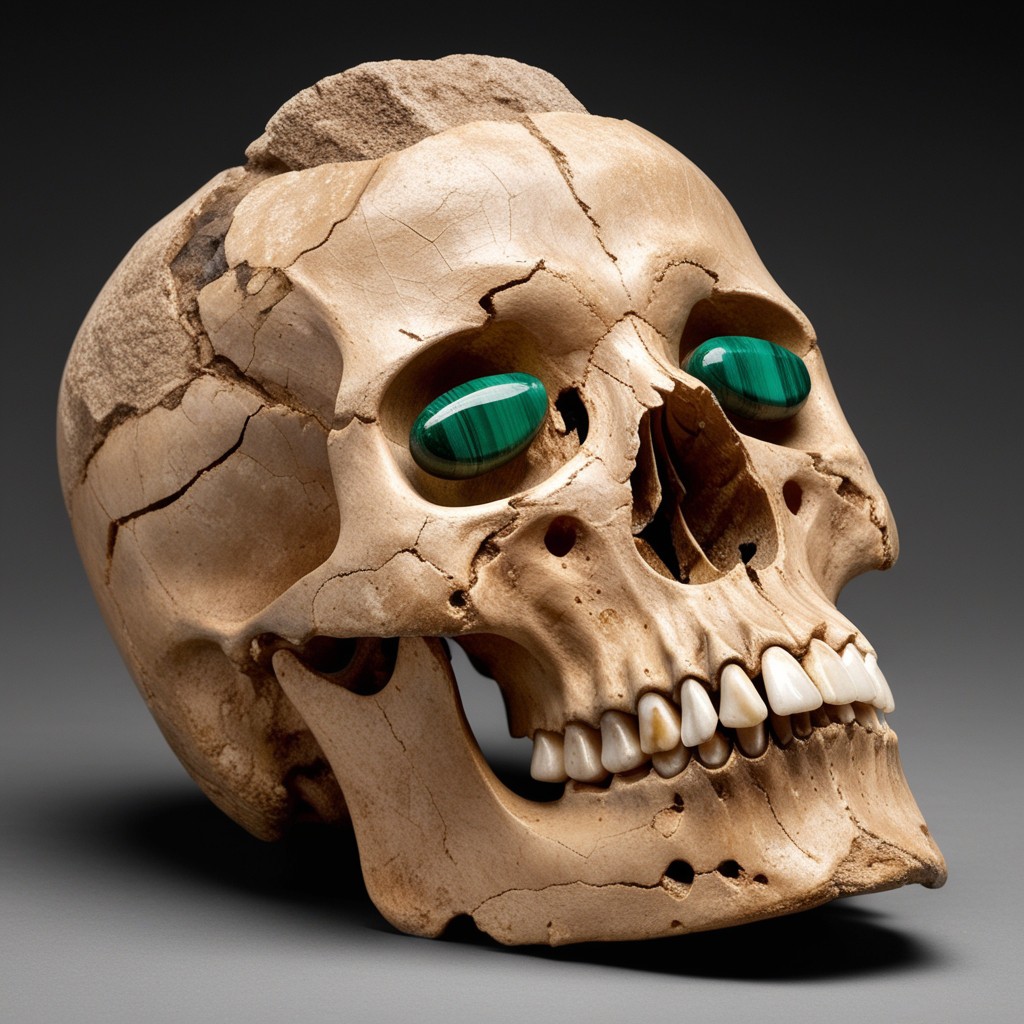
Archaeology continues to amaze us with discoveries that challenge our understanding of ancient civilizations. One such extraordinary find is the skeleton of a 1,600-year-old woman with precious stones embedded in her teeth, offering fascinating insights into ancient practices of body modification and social identity.

The Discovery
This remarkable skeleton was uncovered during an archaeological excavation, and it immediately drew attention due to its unique dental ornamentation. The woman’s teeth contained jewels, likely made of jade or turquoise, intricately embedded into the enamel. This practice, common in some Mesoamerican cultures, speaks volumes about the sophistication and cultural significance of dental adornments over a millennium ago.
A Glimpse into Ancient Mesoamerican Culture
The presence of jewels in teeth reflects a practice most commonly associated with Mesoamerican civilizations, such as the Maya or Aztecs. These societies viewed jade and turquoise as sacred materials, symbolizing power, beauty, and a connection to the spiritual world.

For these cultures, dental modifications were not simply decorative. They were markers of social status, wealth, or religious devotion. Those who underwent such procedures were likely members of the elite or spiritual leaders. The meticulous technique required to embed jewels in teeth also highlights the advanced knowledge of dentistry and aesthetics in ancient societies.
The Science Behind Jewel-Encrusted Teeth
To embed jewels in teeth, ancient artisans would drill small cavities into the enamel using primitive tools made of stone or obsidian. The jewels were then inserted and secured using natural adhesives like tree resin. Remarkably, this process was performed with such precision that it rarely caused damage to the teeth.
The use of jade, a material considered more valuable than gold in Mesoamerican cultures, further emphasizes the importance of this practice. Jade symbolized life, fertility, and eternity, making it a fitting adornment for individuals of high status.
Who Was This Woman?
While much remains unknown about the woman’s identity, the jewels in her teeth suggest she was a person of significant importance. Her burial may have been part of elaborate rituals, with the adornments serving as symbols of her status, beauty, or spiritual role. It is also possible that the modifications were intended to prepare her for the afterlife, ensuring she carried symbols of power and identity beyond death.
What This Tells Us About Ancient Societies
The discovery of this skeleton sheds light on the complex social structures and cultural practices of ancient civilizations. It highlights the intersection of art, science, and spirituality, revealing how people of the time expressed identity and social status through physical modification.
Moreover, this find underscores the importance of adornments in ancient life. From clothing to jewelry and even dental modifications, the artifacts left behind by these societies provide a rich tapestry of their values, beliefs, and technological achievements.
Conclusion
The skeleton of this 1,600-year-old woman with jewels in her teeth is a testament to the ingenuity and creativity of ancient civilizations. It reminds us that even in the distant past, humans sought to express themselves through art and innovation.
As researchers continue to study this extraordinary find, it will undoubtedly contribute to our understanding of ancient traditions and the profound ways in which they shaped identity and society. This discovery is not just a glimpse into the past; it’s a connection to the timeless human desire for beauty, meaning, and self-expression.